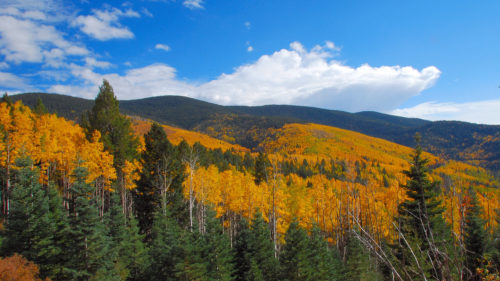In the first hours of the Trump Administration, the webpage outlining policy towards Native Americans was taken off the White House website. Critics quickly jumped on the new Administration, claiming that the page was taken down because President Trump failed to develop an Indian policy. The critics couldn’t have been more wrong, the President’s Indian policy has been around for hundreds of years, in that time it has had many names, and come to Indian Country with many faces, but the policy has always been the same – one of privatization.
Indian lands are under the direct supervision of the federal government, and 19th century court cases continue to hold sway in Indian Country. Under these arcane rules, Congress holds land in trust for native people and uses that relationship to meet the needs of the tribal trustees. Over the years, Congress has had varied success in managing Indian land for the best interest of tribal groups. A recent multi-billion dollar settlement concerning the mismanagement of Indian trust accounts speaks to the trouble Congress has had operating as a trustee.
Not willing to repeat the mistakes of the recent past, the Trump Administration instead proposed to repeat the mistakes of the 19th Century and privatize Indian land, especially those areas rich in natural resources. Native reservations make up just 2 percent of the United States, but they may contain about a fifth of the nation’s oil, gas, and coal reserves, an estimated $1.5 trillion in value. Unlocking that value would be important to tribes, oil and gas interests, and the Trump Administration. After the election, the Trump transition team developed the 27 member Native American Affairs Coalition and charged them with drawing up proposals for Indian Country with topics ranging from healthcare to energy. What they discovered was that private business and tribes must negotiate a bureaucratic minefield to develop reservation-based energy projects.
In seeking a solution, President Trump’s Native American Affairs Coalition decided that a viable policy would be to remove tribal lands from under direct federal control. The plan dovetails with Trump’s larger plan to cut regulations and boost American energy production. The proposed path of privatization and deregulation could prove controversial across Indian Country. The controversy stems from the fact that privatization of Indian land has been tried before. In 1887 Congress passed the General Allotment Act which authorized the President of the United States to survey American Indian tribal land and divide it into allotments for individual Indians. Those who accepted allotments and lived separately from the tribe would be granted United States citizenship. From 1880 to 1930, over 90 million acres passed out of Indian hands. The tribal land base was halved. As part of a campaign to further assimilate Native people into American society, Congress instituted the Termination policy in 1953. This policy ended the special relationship between tribes and the federal government. Over the next decade, 2.5 million more acres of land were removed from tribal control.
The Trump Administration would do well to do their best to avoid making the mistakes of the past. But, it’s also important they know exactly who their friends are. Much of the GOP’s plan to to transfer control of federal lands to state governments, which made it into the Party platform, is the handy work of the American Lands Council (ALC). ALC bills itself as a moderate organization that seeks only to transfer “mismanaged” lands to the states; they make a special point of stating that national parks, wilderness areas, and Indian reservations would be exempt from state takeover. However, the “moderation” of the ALC has been called into question recently when Executive Director, and Montana State Senator Jennifer Fielder promoted the ALC’s cause at a conference hosted by the Citizens Equal Rights Alliance (CERA) in Kalispell, Montana. CERA is a Wisconsin-based organization dedicated to terminating tribal governments, abolish Indian treaties, and turning management of tribal resources over to state governments or private entities.
CERA leader Elaine Wallman is on record as stating, “the consequence [of working with tribal groups as separate governments] by any state elected official is large, long, and egregiously foreboding to the future constitutional protections of citizens [nation]wide.” In fact, Wallman told news outlets that “tribal governments have outlived their usefulness…All citizens should be treated equally.” Pronouncement such as the above are expected from CERA across Indian Country, but seem to be at odds with ALC’s claimed assurances that it does not seek to control tribal lands or waters.
If the CERA-aligned ALC has the influence it does on GOP elected officials, then is it any wonder that the new Administration is considering the privatization of Indian Country in the name of American energy independence? Indian Country has a vital role to play in the development of a secure, American energy future, but that role must be based on the inherent tribal sovereignty of Indian nations. Transferring Indian lands to often-times unfriendly states is no more the answer then transferring other federal lands. Perhaps empowering tribes to manage their own affairs, especially on natural resource related matters, and fully funding federal agencies will lead to better management of national lands, both public and native.
This article appeared in the Spring 2017 edition of the Outdoor Reporter.



